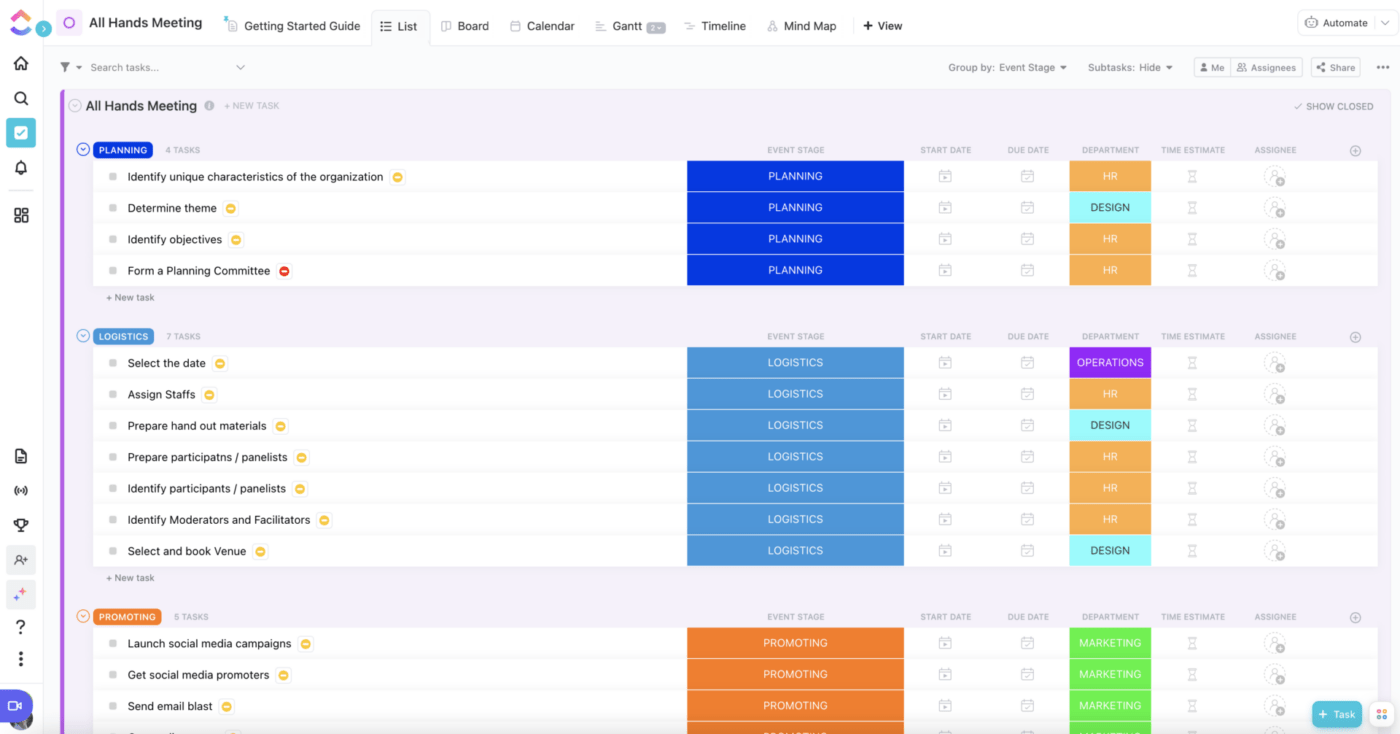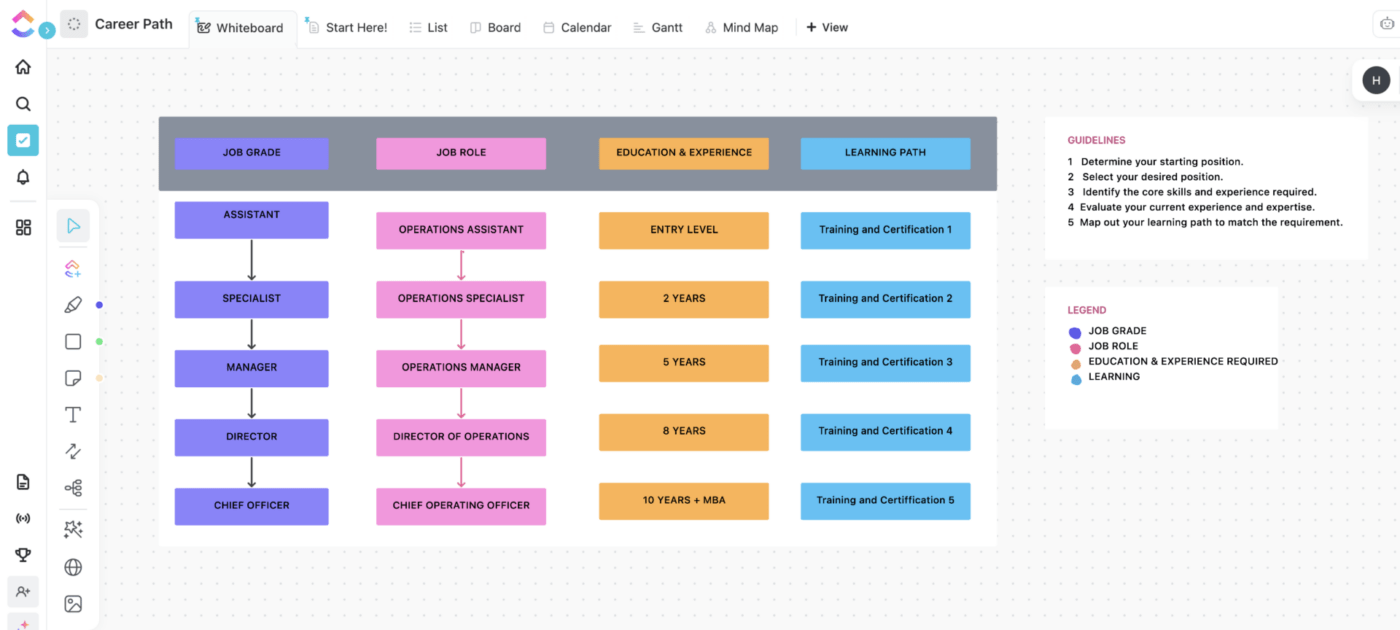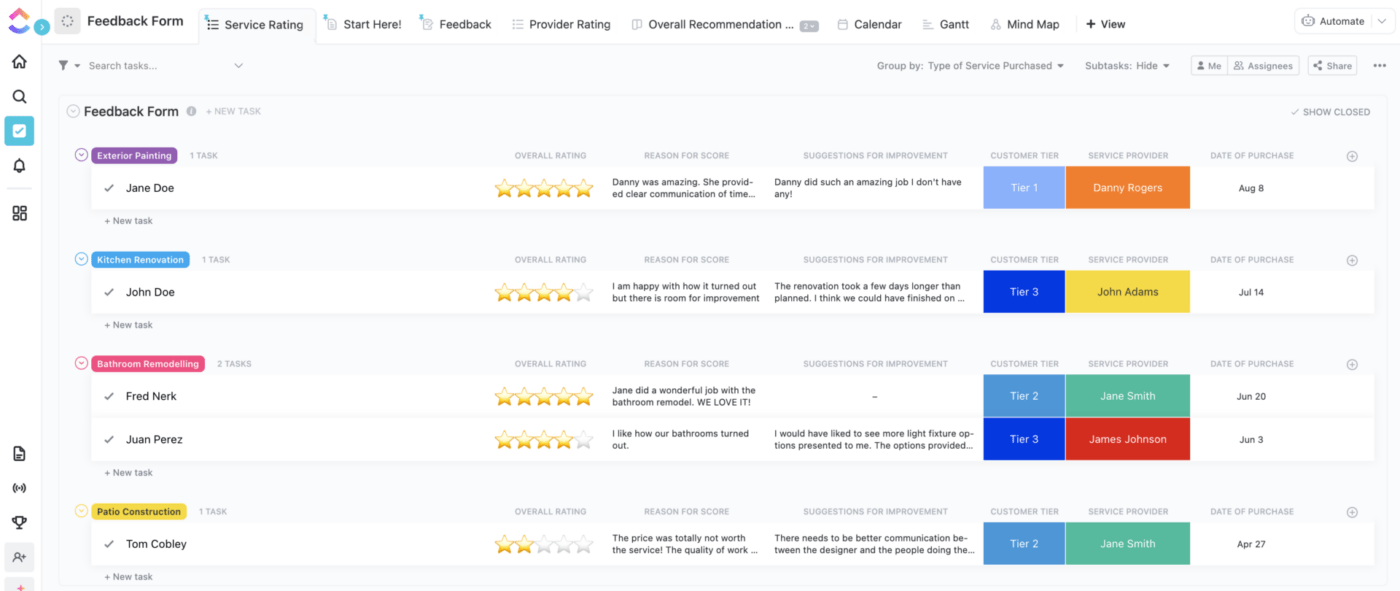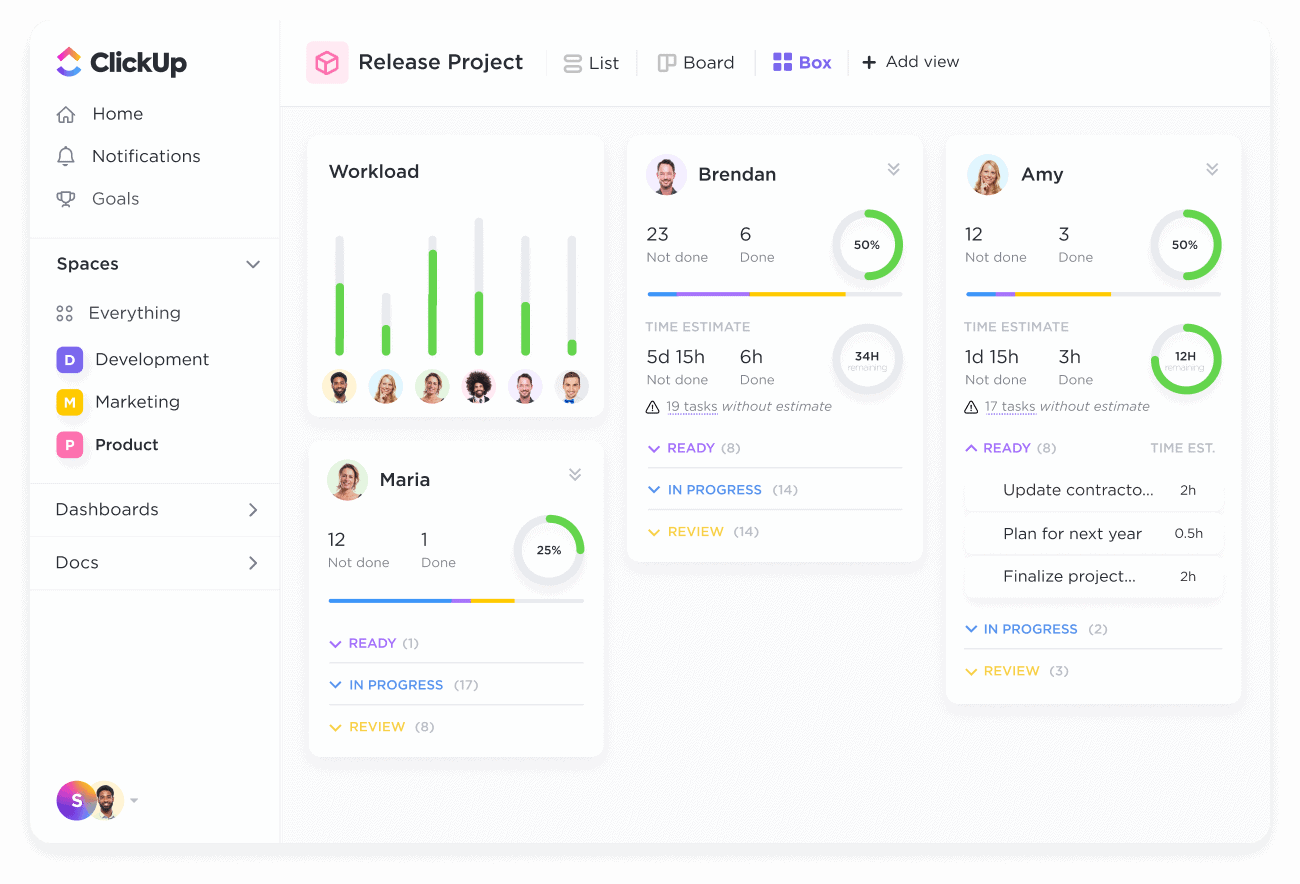
12 SMART HR Goal Examples for Every Company
HR and People departments have come a long way since Toby Flenderson put them on the map in everyone’s favorite binge-worthy show, The Office.
And let’s be honest, your favorite people to talk to at the holiday party are most likely under your company’s People Operations umbrella. That’s likely because your HR and People departments are dedicated to the welfare of every employee and responsible for managing their professional life cycle.
In essence: It’s because they care.
That’s why you can always count on HR managers to remember your name, ask you how you’re doing, and actively listen to your concerns.
But there’s still so much more that goes into creating a progressive HR department, and setting SMART HR goals are a major piece of that puzzle.
Come along as we dive into 12 of our favorite HR goals for every company, including their benefits, expert opinions, helpful tools, and SMART examples you can act on today.
- 1. Create a culture that is employee-centric
- 2. Make your purpose and professional values clear
- 3. Pursue employee advancement
- 4. Strive to enhance the employee experience
- 5. Focus on people operations
- 6. Improve employee retention
- 7. Practice organizational flexibility
- 8. Learn and speak the business operations language
- 9. Strengthen employee engagement
- 10. Build a diverse, equitable, and inclusive company culture
- 11. Create a safe and secure environment for employees
- 12. Prioritize feedback from every angle
What Are HR Goals?
HR—or what you may call People Operations—is the glue that silently holds the business together.
While other departments are planning, producing, launching, and marketing a company’s product, HR ensures that those who make up those departments feel fulfilled at work.
HR goals help give your managers and business leaders a sense of direction when it comes to improving the employee experience throughout their entire tenure. And like all of your company’s goals, the best HR goals are SMART:
S: Specific
M: Measurable
A: Achievable
R: Relevant
T: Time-bound
Human Resources may have formerly been synonymous with paperwork, policies, and handbooks, but in actuality, it carries even more weight—with a focus on culture, safety, inclusivity, and growth.
This leaves room for creativity and, dare we say, fun when it comes to planning next quarter’s HR goals. But it also means that you must invest even more effort and careful consideration into setting intentional goals that will have a clear and measurable effect on the employee’s work experience.
HR goals should also directly align with your company’s founding principles, promote a healthy work environment, and be created with your people in mind!
No pressure, right? 😅
Not to worry! We’re here to help you set and achieve the HR goals you’ve always dreamed of—and your employees will thank you.
Why Is It Important To Set HR Goals?
No matter your industry, company size, or budget, HR goals should center around growth—either for your employees on a personal level or for the business as a whole.
Across departments, setting SMART goals brings people together, holds team members accountable, and plants the seed for positive and more productive work habits.
Why else should you set SMART HR goals?
- To align your team’s focus with the overall values of the company
- To improve every employee’s unique experience
- To give employees a sense of ownership over their work
- To boost morale
- To measure your progress and KPIs from quarter to quarter
- To show people you care
And so much more.
You have nothing to lose and everything to gain from setting thoughtful goals that your HR department can start implementing as quickly as today.
Plus, they don’t have to be that big! Rather than focusing on how you can revolutionize your company’s work environment overnight, think about small changes that will make a big impact and ultimately, drive results over time.
12 HR Goals Every Company Should Set
It may seem like a lot of these HR goals share similar benefits when they’re carried out effectively, and that is entirely on purpose.
You also may find that your HR department already embraces one or more small parts of these larger goals. This list will provide new ways to enhance the effects of those efforts in a way that is more narrowly tailored to your employee’s professional needs.
Use these 12 SMART HR goals to gain fresh perspectives, ideas, and better your company with the resources you already have!
And did we mention there will be templates? Let’s go!
1. Create a culture that is employee-centric
Ever heard the phrase “love what you do and you’ll never work a day in your life?”
Investing time into creating a positive and employee-first work environment is the first step in reaching this HR goal—which is a big deal because as cheesy as it sounds, we all strive for this. ⬆️
When we talk about company culture, we’re not talking about in-office ping pong tables, corn hole, or cold brew on tap—we’re talking about organizations that value the same ideas, work-life balance, and philosophies that you do.
And besides, your people are everything! Putting your employees first shows that you care about and respect them as humans with real lives, interests, and commitments—not just as a workforce.
Need another reason to rethink your company culture?
Putting policies and guidelines in place to protect the safety, mental health, and work-life balance of your employees will help them develop healthier professional relationships with themselves and their peers.
And from an HR manager’s perspective, developing an employee-centric culture will take you farther, attract better talent, and help you build a company full of dedicated people who are happy to show up for work every morning.
SMART example
Create a new policy centered around creating a positive work environment and present it at your next scheduled company-wide meeting or All-hands.
This new policy may introduce guidelines surrounding language and behavior related to sensitive topics, conflict management, or even something as exciting as Summer Fridays.
Looking for ways to keep the team aligned during your All Hands Meeting? We have you covered with ClickUp’s All Hands Meeting template customized for this very thing. Keep your company up-to-date on the latest announcements, encourage collaboration, and improve clarity during meetings with this pre-build List template that covers all of your bases.

2. Make your purpose and professional values clear
Your company’s core values are the foundation of its culture.
As an HR or business manager, you already recognize this, especially among new hires.
You are now much more likely to hear questions from potential candidates related to fulfillment, security, appreciation, and general happiness among current employees.
These sound like universally-held dreams that we all want and should never expect from our careers. But the thing is, these goals are entirely attainable with the right set of core values to attract like-minded candidates who will commit to your company for the long haul.
Plus, your core values are not stagnant. They should change as your company matures to keep up with industry trends, brand identity, target audience, growth, and more.
At ClickUp, our own core values have seen their fair share of edits as we continue to evolve. Think: strong opinions, loosely held. 😎
I mean, you can’t become the future of work without going with the flow and embracing change, am I right?!
Our now seven core values speak to ClickUp as a product as much as they do to the people who power it. These values help the entire team at ClickUp own their work, lead by example, take pride in what they do, and simply have fun. What’s more, they lead us to greater talent, higher retention rates, and endless opportunities for internal growth. 🙌🏼
SMART example
By the end of the month, create and present a list of no more than seven fundamental values your business and employees connect with.
Pro tips:
- First, take a hard and critical look at your current company values
- Seek out inspiration from books like The Slight Edge, Atomic Habits, or Vision to Reality
- Don’t be afraid to ask other department heads, current employees, and new hires about the philosophies that drive them
3. Pursue employee advancement
For all of the time employees invest in a company, they want to know that the company is willing to invest the same effort in return.
Integrating learning opportunities into every employee’s experience is a great way to express this effort.
This HR goal may come in the form of a company-wide LinkedIn Learning account, monthly speakers from within or outside the company, conferences, or mentorship opportunities for any employees with interest. It’s also a step in the right direction when it comes to retaining your top employees, too!
This Career Path template by ClickUp is an excellent resource to introduce personal career aspirations into every employee’s quarterly objectives. This List will keep your employee’s goals organized and easy to understand, no matter what department they’re from.

Candidates want to know that they are joining a team that will encourage them to pursue their passions—even if they don’t have the experience yet. And in the long run, it will only make your workforce stronger, more diverse, and more proactive.
SMART example
Implement a LinkedIn Learning resource hub across multiple teams this quarter.
4. Strive to enhance the employee experience
We’ve talked a lot about company culture, values, and learning opportunities—but your employee experience spans even further than that.
Yes, the right work environment helps build the best-fitting talent, but what about the parts of their work-life that don’t appear on a daily to-do list?
The employee experience begins at the first interaction—before the candidate is even hired—and carries through for the rest of their time as a member of the team.
Elevating your employee experience may include revamping your job postings, responding to candidates faster, streamlining your onboarding process, or even introducing a new monthly award to your company meetings.
These are all things that help employees feel seen, trust their HR departments, and worry less during the work week. Plus, it shows employees that their company values their time, opinions, and feedback—and not just their performance.
Check out these Performance Review Templates!
SMART example
Introduce a new way to recognize your employees by the start of next quarter. If you already have an award in place, how can you incentivize and revitalize it?
Pro tips:
- Use the rest of the quarter to think about what this recognition entails. Is there a prize? How is it presented to the company? What makes it special?
- Ask managers to nominate members of their team to help all members feel seen
5. Focus on people operations
Haven’t you heard? People Operations are the new HR.
TBH, it was about time for a rebrand.
Hand in hand with employee-centric work culture, refocusing your HR goals on People Operations shows that you see your workforce as more than a number or a machine.
SMART example
Create a quarterly wellness program or event for employees to participate in.
This could be a bonding moment in the form of group volunteering, an on-demand yoga class for remote teams, or even a wellness Slack channel for employees to encourage their peers’ attention to self-health inside and out.
6. Improve employee retention
Ah, the never-ending question—we hired our ideal team, now how do we keep them?
Even with relatively high employee retention rates, this HR goal seems to make the list every quarter.
If you’re following this article, you are already headed in a positive direction when it comes to lowering employee turnover. The main takeaway to keep in mind is that employees want to know you care and are making choices with their best interests at heart.
Small gestures have a big impact, especially when you acknowledge how real-world problems really do piggyback into the workplace with us.
Wage adjustments for rising inflation, organizations speaking out on human rights issues, and action plans regarding diversity and inclusion may not seem necessary but could ultimately be the make-or-break factor when it comes to an employee’s loyalty to their company as a whole.
SMART Example
Allow and encourage employees to embrace company benefits for improved mental health and work-life balance while on company time. I.e., let your employees schedule a morning therapy appointment or offer paid time for wellness classes.
Introduce this initiative at the start of next quarter and use the rest of the quarter to gauge if and how it makes a difference among your employees.
7. Practice organizational flexibility
If you have not already created a flexible work environment for your employees, they are in for a real treat.
Part of embracing a positive and healthy work-life balance is acknowledging that we are all juggling a lot more than our daily work tasks.
As much as your employees may love the office, its environment, parking situation, and team members, having the option to work remotely takes a huge strain off of those who also have kids, pets, spouses, and commitments at home.
Bear in mind that a flexible schedule doesn’t always come in the form of WFH.
A flexible work environment can also look like an adjusted 8-5 schedule.
Especially for your night owls, neurodiverse team members, and creatives, their best work and motivation may not strike them at the same time every day. A supportive work schedule shows these team members that they are trusted by HR and management.
SMART example
Extend work-from-home Fridays or Tuesday and Thursday flex options to all employees at the start of next quarter.
Pro tips:
IT will need a major heads-up if you’re team is currently all on-site. 👀
This Team Requests template in ClickUp will help you store all of your employees’ IT requests, equipment needs, benefits, and supplies in an organized Folder with tasks, Custom Statuses, and multiple views to make your WFH transition as smooth as possible.

8. Learn and speak the business operations language
We know how important it is to know how our employees feel towards work, but what about the work that they actually do?
This HR goal is less focused on performance and more on highlighting how people’s roles fit together to bring the entire business to life.
Showing an interest in knowing how various teams operate, how different employees work with others, and common challenges across different roles will go a long way. This will not only build your rapport with employees beyond the onboarding stage, but it will help others feel understood by HR.
SMART example
Schedule separate meetings with team leads in different departments to get to know them, hear about their processes, and learn some of their common lingoes by the end of the month.
9. Strengthen employee engagement
It’s one thing to create a ton of new initiatives, but it’s a whole other ball game making sure that employees actually attend them.
By getting to know your employees and making the effort to engage with them, they will be more likely to reciprocate.
Plus, all of these HR goals are for them!
These SMART goals just scratch the surface of possibilities. The key to stronger employee engagement is to support them and have a little compassion.
SMART example
Have lunch catered to the office one day a week. If you can, you should start this ASAP. Everybody loves food and there’s nothing like bonding with new friends over a meal.
10. Build a diverse, equitable, and inclusive company culture
Arguably, all of your HR goals really start here.
Employees want to work for a company that reflects and embraces the real world, and most importantly, themselves. A diverse and inclusive company culture leads to a safe work environment, stronger peer relationships, and downright better ideas.
New perspectives are the key to solving problems creatively, innovation, and ultimately, success. But most importantly, diversity and inclusion help employees feel like they belong.
No one wants to feel like they’re hiding important parts of themselves or their lives from their team—and they shouldn’t have to. HR is all about the people, and placing a high value on creating an equitable work environment shows that you’re really owning that sentiment.
SMART example
Set a monthly meeting for any employee to share thoughts, ideas, and concerns related to diversity, equity, and inclusion within your company.
Pro tip: Make sure employees know that they can always reach out to you personally with concerns if they cannot attend are or are intimidated by a meeting environment.
11. Create a safe and secure environment for employees
Mentally and physically, work should always be a safe and secure place for all employees.
This is not just relative to how employees treat each other, but how comfortable they are asking for help, reporting uncomfortable situations, and simply speaking their minds.
Yes, flexible work environments help employees feel more secure and comfortable as they can choose their own work locations, but that should not be the go-to option at the first signs of toxicity, burnout, or distrust among teams.
SMART example
Reach out to employees by the end of the week to determine their work and communication preferences so they know that you respect and understand their individual boundaries.
12. Prioritize feedback from every angle
When HR says “we want to hear from you!” we mean it.
Digital feedback forms are a convenient and quick way to gather customer and internal feedback.
A customizable feedback form template like this feedback form in ClickUp will not only help you collect feedback quicker, but will take some of the pressure off of sorting through it by automatically adding it to a categorized list with multiple view options, Custom Fields, and Custom Statuses.

Feedback should be an everyday occurrence and expected after any interaction. Direct, honest, and kind feedback is the key to innovation and will ultimately lead to more productive meetings, conversations, and work quality across the board.
Every team member is hired for their unique combination of skills and experience that make the entire company stronger.
No company is ever intentionally at a standstill, but the best way to start pulling yourself out of a rut is to turn to your team for feedback.
SMART example
Make sure employees know that feedback is expected and important to your company with a set of guidelines on how to deliver feedback.
Ask employees to write and share “Work With Me” documents by the end of the week with their preferred communication and feedback style to keep the feedback experience honest, positive, and personal.
How to Track HR Goals
Woohoo! You have 12 SMART and people-first goals to introduce to your HR departments and your employees will feel the benefits in no time.
Even for what seems like the smallest adjustments, having powerful work management software to organize your teams, goals, and KPIs is essential to fostering positivity around new initiatives.
That’s how ClickUp lifts the weight off of your HR team’s shoulders.
ClickUp is the ultimate, all-in-one productivity software to create, track, and hit your goals on the same platform that already manages your other work tasks.

ClickUp’s feature-rich experience is designed to boost productivity across all departments—including ClickUp’s Goals feature for monitoring progress with numerical, monetary, true or false, and sprint Targets.

Keep all of your HR goals together in structured Goals folders and easily edit permissions to control who can access different goals—perfect for setting both personal and team-oriented objectives.
Beyond its customizable Goals feature, ClickUp also offers an endless library of free, pre-built HR and recruiting templates to help you act on new ideas the second you have them.
Don’t sleep on your HR goals for another second, sign up for ClickUp for free to start refocusing your operations on the people who drive the business’ success. 💜



Questions? Comments? Visit our Help Center for support.